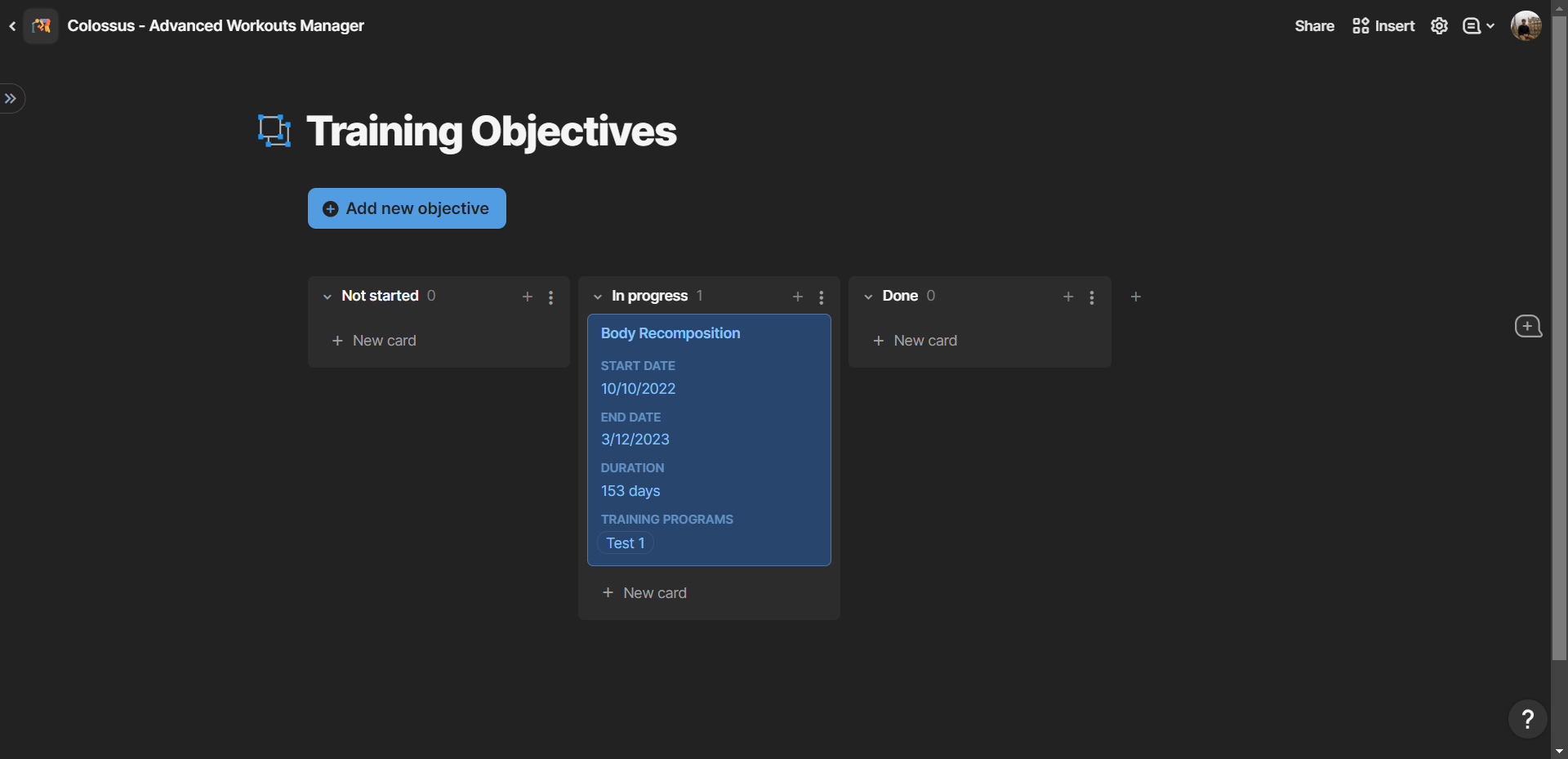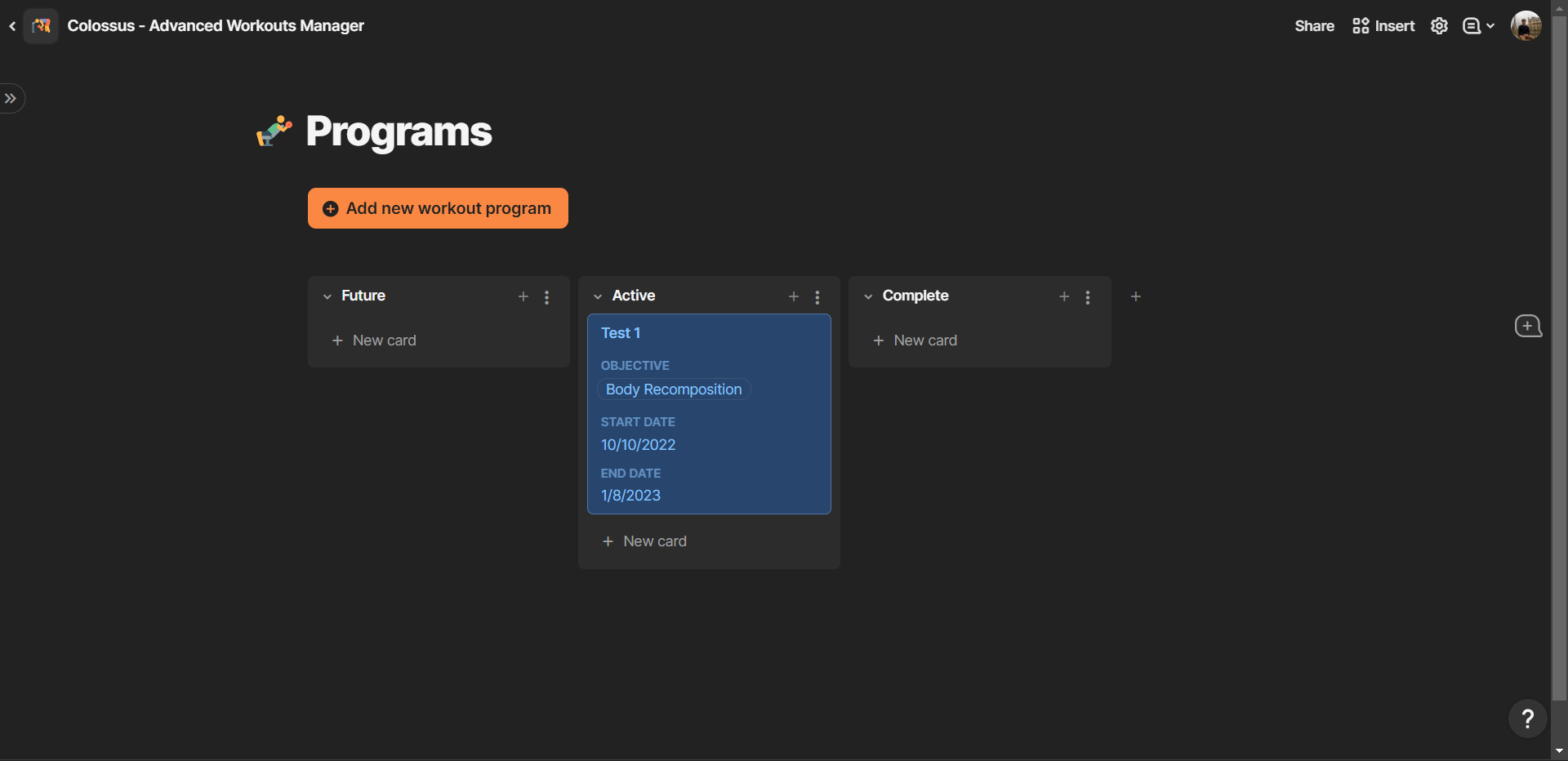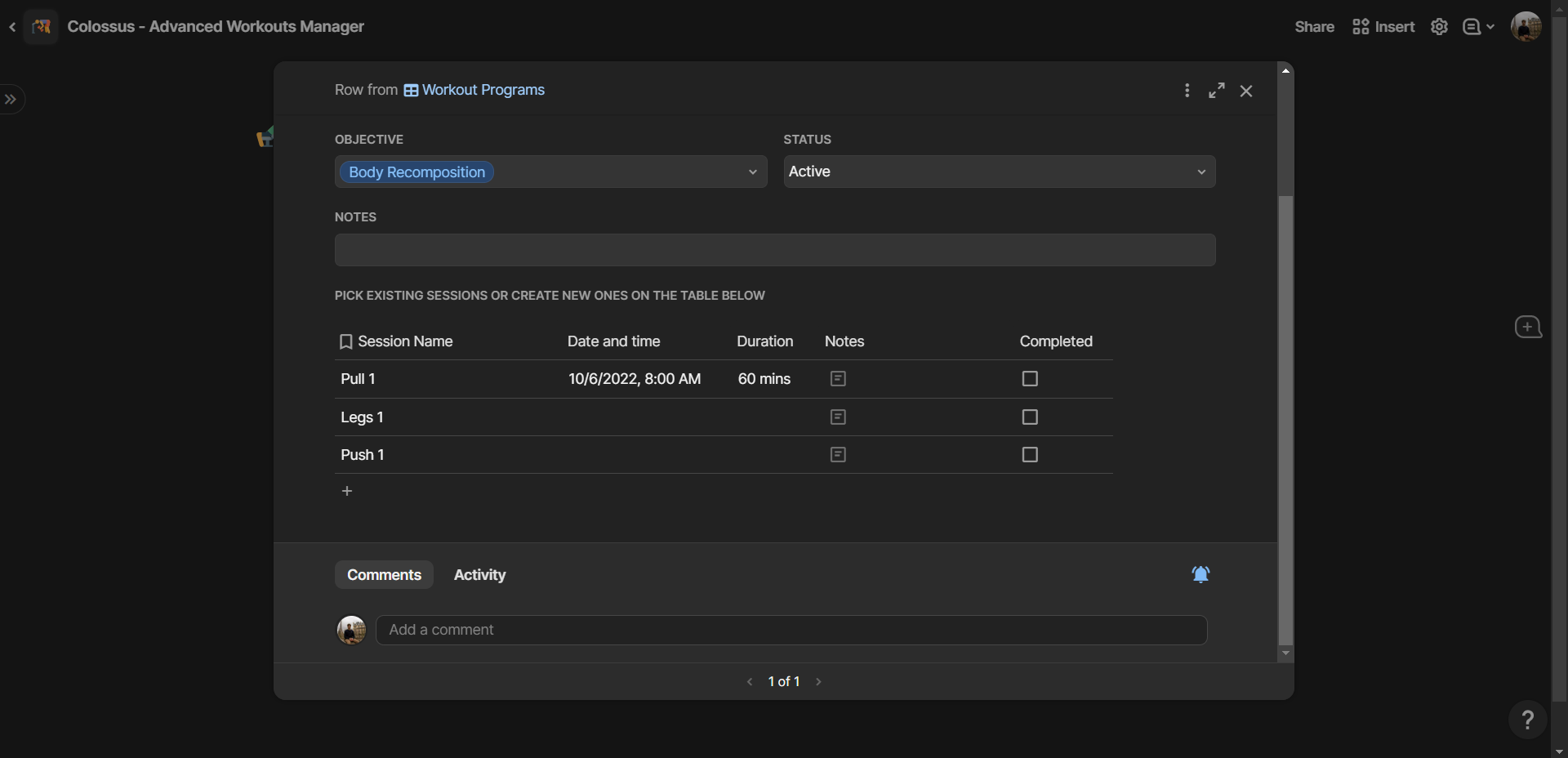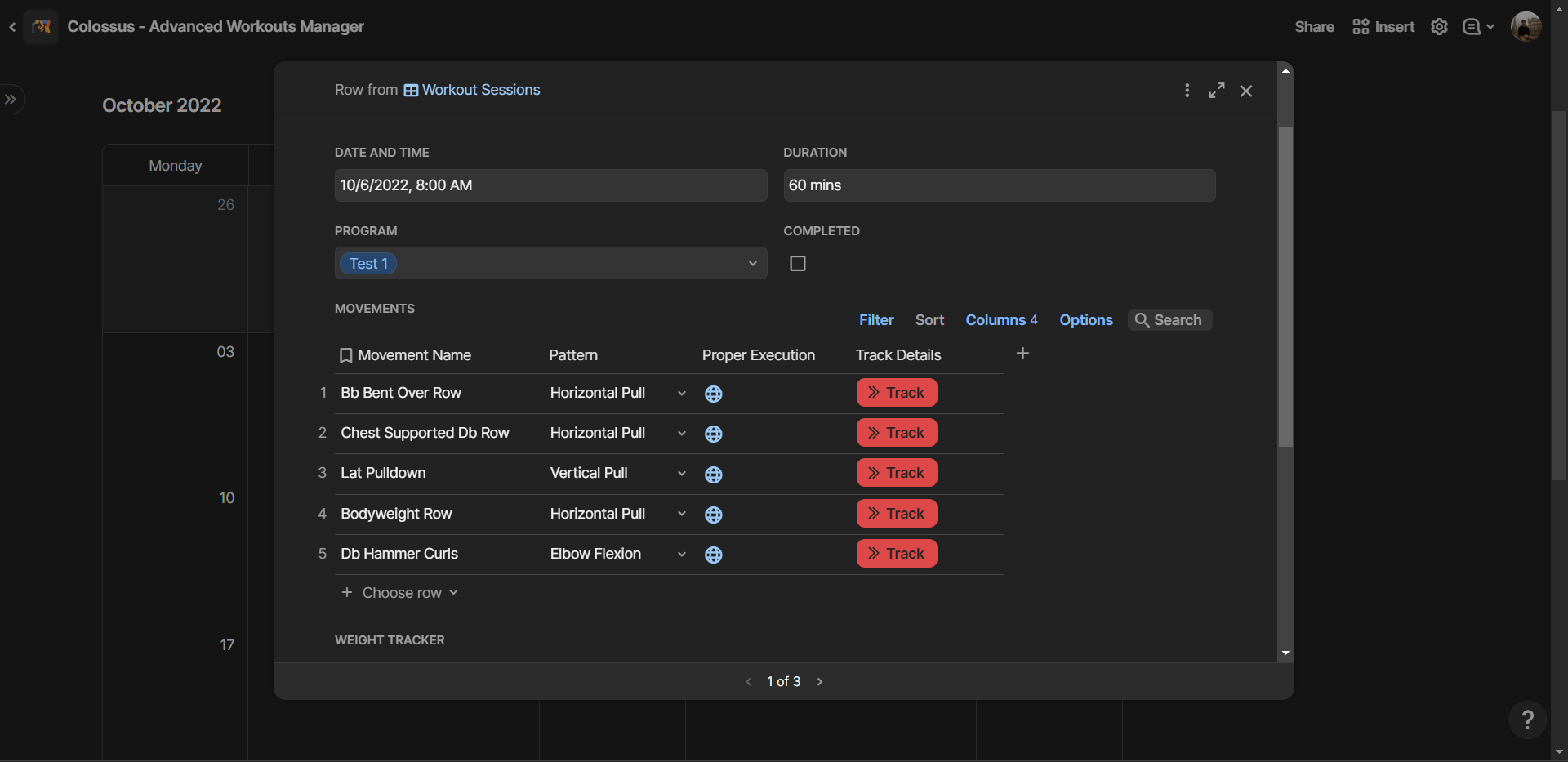Coda Advanced Workout Planner and Tracker
Training is different from exercising, as established coach Jeff Cavaliere from Athlean X remarks in his videos. Training is the committed enterprise of cultivating the body and mind by pushing to the limits when necessary and accounting for strategic rest. That’s the art and science of training periodization. Exercise is the light, sporadic practice of low-intensity movement that is unstructured and haphazard. In the context of data science, one may light-heartedly akin exercise to unstructured data, and training to structured data. Sometimes you may want to introduce unstructured training intentionally, as movement pioneer Ido Portal posits.
Movement of any sort is considered crucial for any individual. And it is absolutely fine to merely exercise (e.g., go for a walk in nature daily, or practice some low-intensity resistance training at the gym) for most people. When it comes to athletes and individuals who enjoy optimizing their fitness variables, proper periodization is beneficial. That’s because periodization provides an intentional path toward your long-term fitness objective. Fitness objectives may simply be about improving one’s cardiovascular fitness or increasing one’s strength for longevity purposes.
When you want to maximize your variables and know exactly what to do in each session, training programs come in handy. They provide structured data to work with. They allow you to intentionally progress over time following established frameworks (i.e., progressive overload). Workout programs remove the cognitive load of deciding the movements to perform during a session. This is a relevant benefit because it allows you to focus on training, rather than thinking about training while training. It is similar to deep work. You may want to plan for it, and it comes at a time when you need to merely execute because only philosophizing about an activity doesn’t magically manifest it into existence.
The disadvantage of training periodization is that it requires a knowledgeable person in the field. A coach must apply their knowledge to create training programs that make logical sense and drive you toward your objectives. That can be expensive, which may represent a barrier to entry for many athletes. Having a clear training plan may also take the fun away from your sessions if you are an athlete who enjoys a lack of structure and improvisation.
In such a case, flow practices like “Movement” by Ido Portal or Yoga may suit you well. If you have enough experience, you may also freestyle (i.e., not follow a plan) your resistance training sessions at the gym or at the park because you find it meaningful. In such a case, you accept the fact that you are not optimizing all your variables, and you are fine with it because you care more about the mere practice.
To track your training programs and movements, you may use a digital system. It could be custom-built, or an app. I already wrote about this topic and created an advanced Notion workout tracker previously. A custom system can provide you the flexibility that a “fixed” app can’t.
I’ve recently developed a new digital workout management system using Coda. The core of the system is pretty much the same as the Colossus Workouts Manager. The ability to create highly custom user experiences in Coda makes it a fantastic tool for a workouts manager app that can be customized once you get the gist of it. From a structural perspective, these are the core data objects in a workouts management system (with periodization capabilities):
Objectives
Training objectives are short-medium-term targets you would like to achieve through your fitness journey. “Body recomposition reaching 15% body fat” can be an example objective. Each objective has a start and end date. Each objective also has one or multiple training programs related to it. Each training program is part of your periodization journey to achieving your objective.
The practice of setting objectives may feel scary sometimes. Writing down your aspirations, especially when it comes to health and fitness, makes them take concrete form. You may feel exposed and insecure about your ability to achieve them. The process of “becoming a person” also involves coming to terms with reality as is. And holding back your genuine aspirations for fear of confronting failure may not be a good idea, because such a mindset can lead to stuckness and emptiness.
Programs
Each objective is composed of one or multiple programs. A program is a well-defined, time-bound activity with a specific goal and composed of multiple training sessions. For the example “body recomposition reaching 15% bodyfat” objective, you may have multiple programs over the span of 3 to 4 months.
Those programs follow a clear progression pattern intentionally selected by taking into account the entire periodization season, or just the reference objective. The first program—say, for month 1—may be focused on basic strength with a linear progression model. The second program may ramp up the volume to emphasize hypertrophy, before entering the third program, which may focus on metabolic stress and cardiovascular improvements.
It is essential to note that for the example “body recomposition” objective, nutrition is vital. This means that training is only 50% of the equation needed to achieve the objective. In this post, I am focusing on training because this is what the system I’ve created does. You can read more about nutrition here.
Sessions
Each training program is composed of multiple sessions. A session is an actionable unit with a date and time, duration, and multiple training movements. Sessions are usually purposefully built to follow a mechanically advantageous purpose. For example, you may have a “Pull” session repeated twice during one week, as part of a push, pull, legs training program. Completing training sessions leads to the completion of the training program.
Movements & Tracking
Each session is composed of multiple movements. Movements are the last unit of the Coda workouts management system. You can track the details of your movement execution via a button that allows you to enter the number of sets, reps, rest, and weight lifted (if needed). You can also add movements to a chart area of your Coda workouts app by checking a dedicated box.
And that is all there is, fundamentally, in a well-structured workouts manager app. Once the planning phase is over and you have clear, actionable sessions, you can manage your whole experience from the main dashboard. That’s the place where you can access your weekly workouts, as well as your broader sessions calendar.
I also write a weekly newsletter. You can read my previous issues (and sign up if you like) here.





